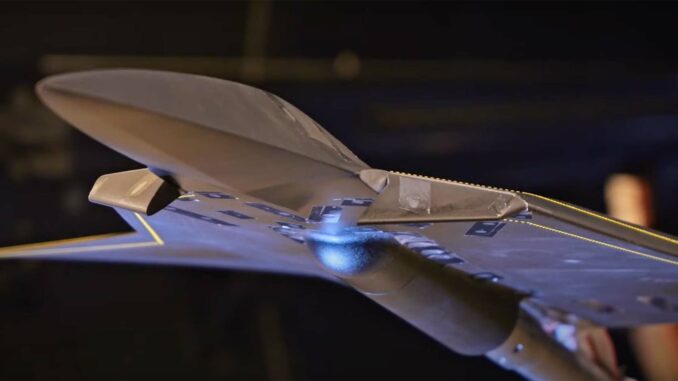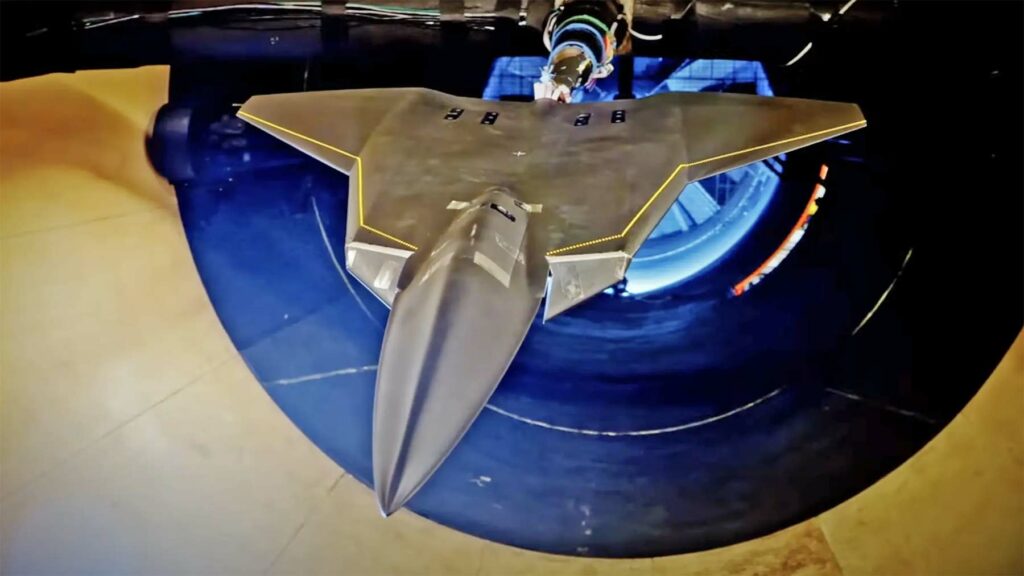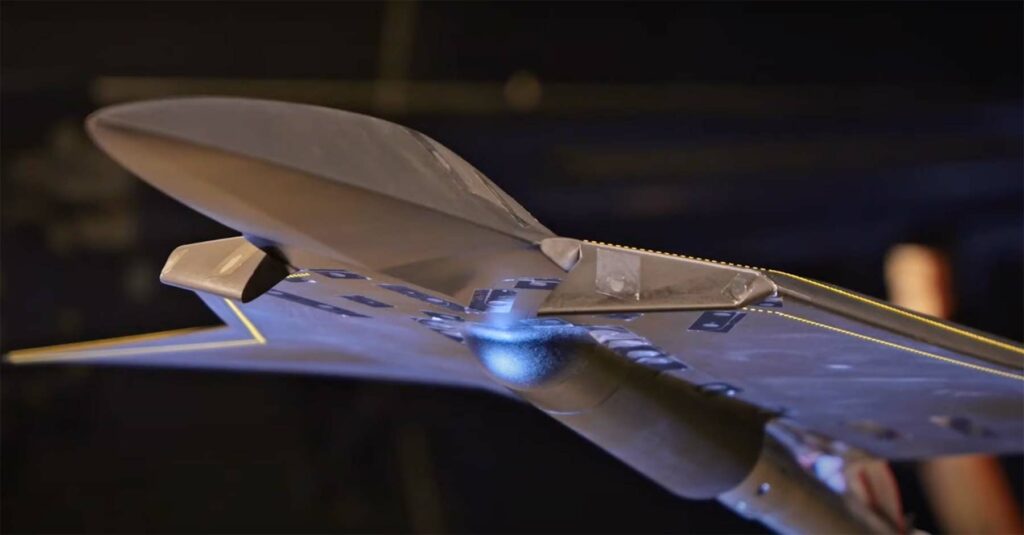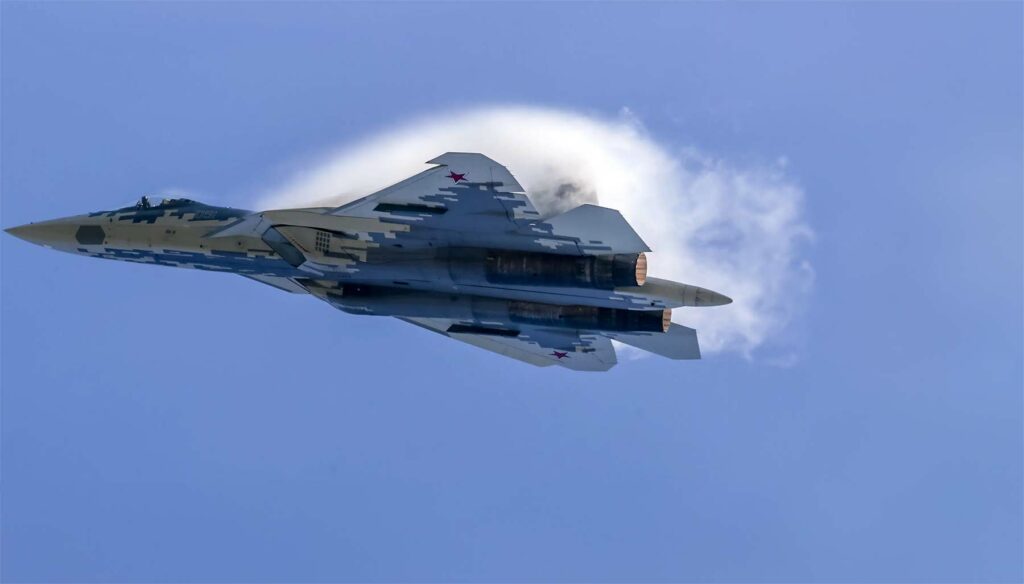
Discover how LEVCONs are revolutionizing the design of future tailless fighters, inspired by the Russian Su-57, for enhanced agility.
The introduction of Leading Edge Vortex Controls (LEVCONs) represents a significant advance in the design of future European fighter aircraft, particularly for tailless configurations. These devices, which play a central role in aircraft agility, draw significant inspiration from the Russian Su-57 Felon advanced fighter.

Background and inspiration
The French concept of a future tailless fighter integrating LEVCONs (Leading-Edge Vortex Controllers) represents a significant step in the evolution of aeronautical technologies. Inspired by similar devices seen on the Russian Su-57 Felon fighter, LEVCONs are envisaged to enhance the aircraft’s maneuverability and agility, while preserving the stealth characteristics inherent in tailless designs.
Convergence in aerospace innovation
The similarity between the LEVCONs of the future French concept and those of the Su-57 suggests a convergence in the field of aerospace innovation, where different nations are exploring similar ideas to overcome the design challenges of tomorrow’s combat aircraft. This approach testifies to the growing importance of advanced control systems in enhancing the performance of modern aircraft, particularly in innovative aerodynamic configurations such as those without tails.
Role of LEVCONs
LEVCONs are control surfaces mounted on the leading edge of the wing. Their main function is to manipulate the vortices generated at this edge, thereby improving lift and control of the aircraft, especially at high incidence where traditional aircraft may encounter limits to their maneuverability. In a tailless aircraft, where vertical stabilizers are absent, LEVCONs play a crucial role in providing increased stability and agility, compensating for the loss of conventional control surfaces.
Tailless aircraft advantages
Tailless designs offer significant stealth advantages, as they present fewer reflective surfaces to enemy radars. Integrating LEVCONs into these configurations retains these advantages while improving aircraft agility, which is essential for the complex maneuvers and rapid responses required in air combat scenarios.
Tests by Onera
Onera, the French national aerospace research center, played a key role in testing this innovative configuration. Their wind tunnel tests, in particular on scale models of future fighter concepts, aim to validate the performance and benefits of LEVCONs under controlled conditions, simulating the limits of the aircraft’s flight envelope. These tests are crucial to understanding how these devices affect the aircraft’s maneuverability, stability and stealth, and to ensuring that the final design is both efficient and reliable.

Implications for combat aircraft design
The integration of LEVCONs into a tailless fighter is a move that reflects a deep understanding of modern aerodynamics and flight control technologies. It indicates a trend towards smarter aircraft, where stealth, maneuverability and aerodynamic efficiency are optimized through advanced technological innovations. It also suggests that future combat aircraft may move away from traditional designs to embrace forms and functionalities that were once considered futuristic or experimental.
Tailless aircraft, while benefiting from a significant reduction in radar signature, often encounter challenges in terms of maneuverability. LEVCONs offer a solution by increasing directional stability and improving steering response, which is essential for aircraft operating in demanding combat environments.
Contribution to Stealth
LEVCONs, by adjusting the airflow over the leading edges of the wings, can potentially modify the aircraft’s radar signature. Their design and positioning must therefore be optimized to ensure that they do not compromise the aircraft’s ability to avoid radar detection.
When properly integrated, LEVCONs can even contribute to stealth by enabling the aircraft to maintain flight attitudes that optimize radar signature reduction, while improving maneuverability and aerodynamic performance. As such, their use must be meticulously calibrated to balance improved maneuverability with the maintenance of stealth characteristics, ensuring that the aircraft remains elusive to opposing detection systems.
Comparison with the Su-57
The Russian Su-57 Felon, equipped with LEVCONs, serves as a reference for studying the effectiveness of these control surfaces. By studying the application of LEVCONs on the Su-57, European engineers and designers can gain valuable insights into how these control surfaces affect aerodynamic performance and maneuverability. Detailed analysis of their operation can offer insights into how to optimize their design for tailless aircraft, where aerodynamic control is a major challenge due to the absence of vertical tailplanes.

NGF and FCAS integration
The study of LEVCONs for Onera’s Superman project aims to influence the design of the Next Generation Fighter (NGF), which is at the heart of the European Future Air Combat System (FCAS). This research feeds into the development of a maneuverable, stealthy and efficient fighter, ready to meet tomorrow’s aerial challenges.
LEVCONs offer a promising solution for improving the maneuverability of tailless fighters, while maintaining their stealth advantages. Their development and integration require a careful approach to balancing aerodynamic performance and stealth.
War Wings Daily is an independant magazine.